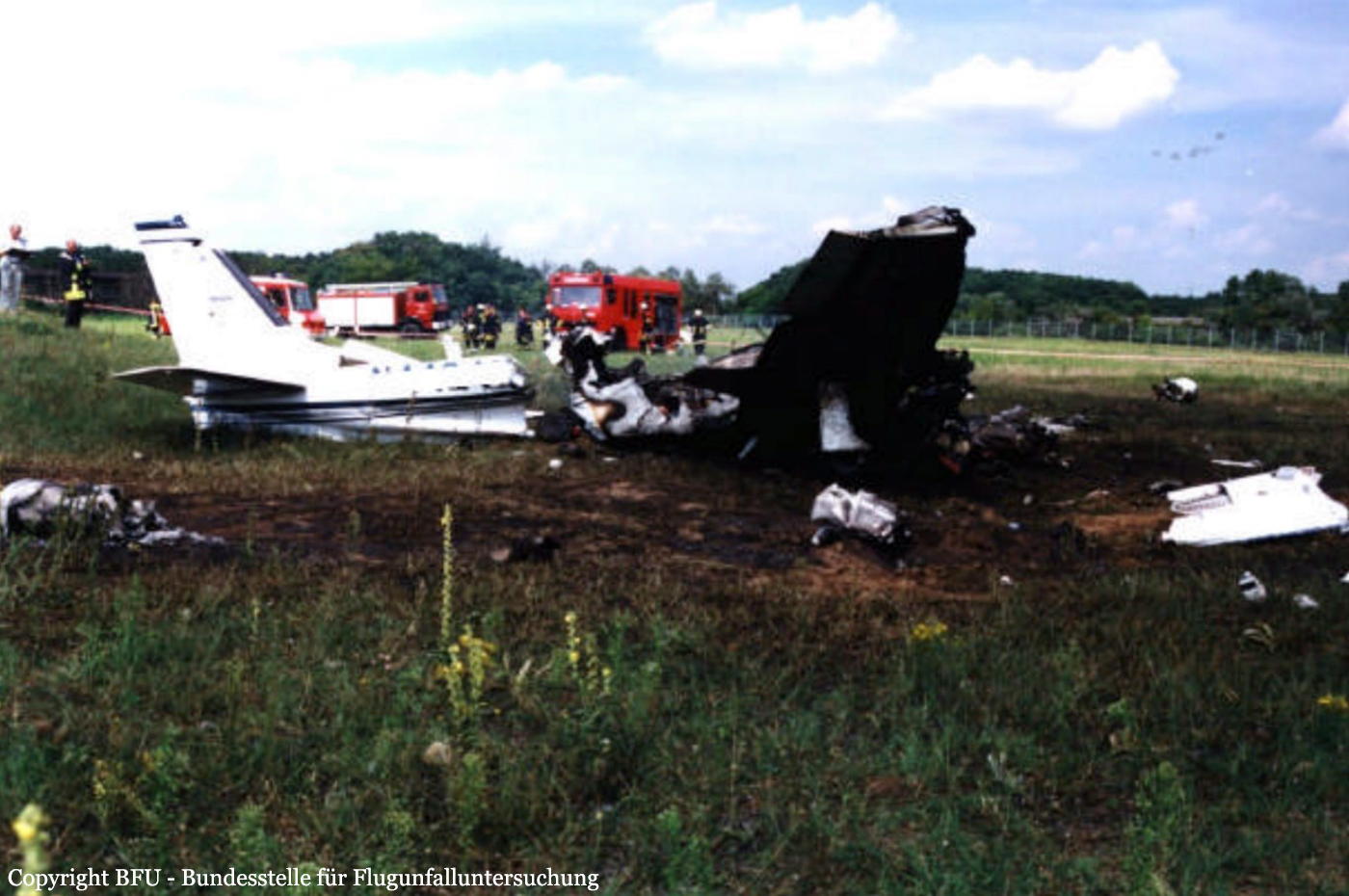Region
Crash of a Piper PA-42-1000 Cheyenne 400LS in Nuremberg: 1 killed
Date & Time:
May 5, 2001 at 1631 LT
Registration:
D-IMAY
Survivors:
No
Schedule:
Nuremberg – Zurich
MSN:
42-5527024
YOM:
1985
Crew on board:
1
Crew fatalities:
Pax on board:
0
Pax fatalities:
Other fatalities:
Total fatalities:
1
Circumstances:
The twin engine aircraft departed Nuremberg Airport runway 10 at 1628LT on a private flight to Zurich. During initial climb, at a height of 2,000 feet, the pilot was cleared to climb to 13,000 feet at his discretion. While climbing to a height of 4,500 feet, the aircraft stalled but quickly climbed again to 4,700 feet. Suddenly, control was lost and the aircraft entered a dive before crashing in a wooded area located along the motorway A3. The accident occurred three minutes after takeoff and the wreckage was found about 3,5 km east of the airport. The aircraft was destroyed and the pilot, sole on board, was killed. At the time of the accident, weather conditions were good with a 10 km visibility and a wind from 010 at 10 knots.
Probable cause:
No technical anomalies were found on the aircraft, the instruments and the engines. The aircraft' speed increased to 280 knots during the dive. The assumption that the pilot suffered a heart attack was not ruled out.
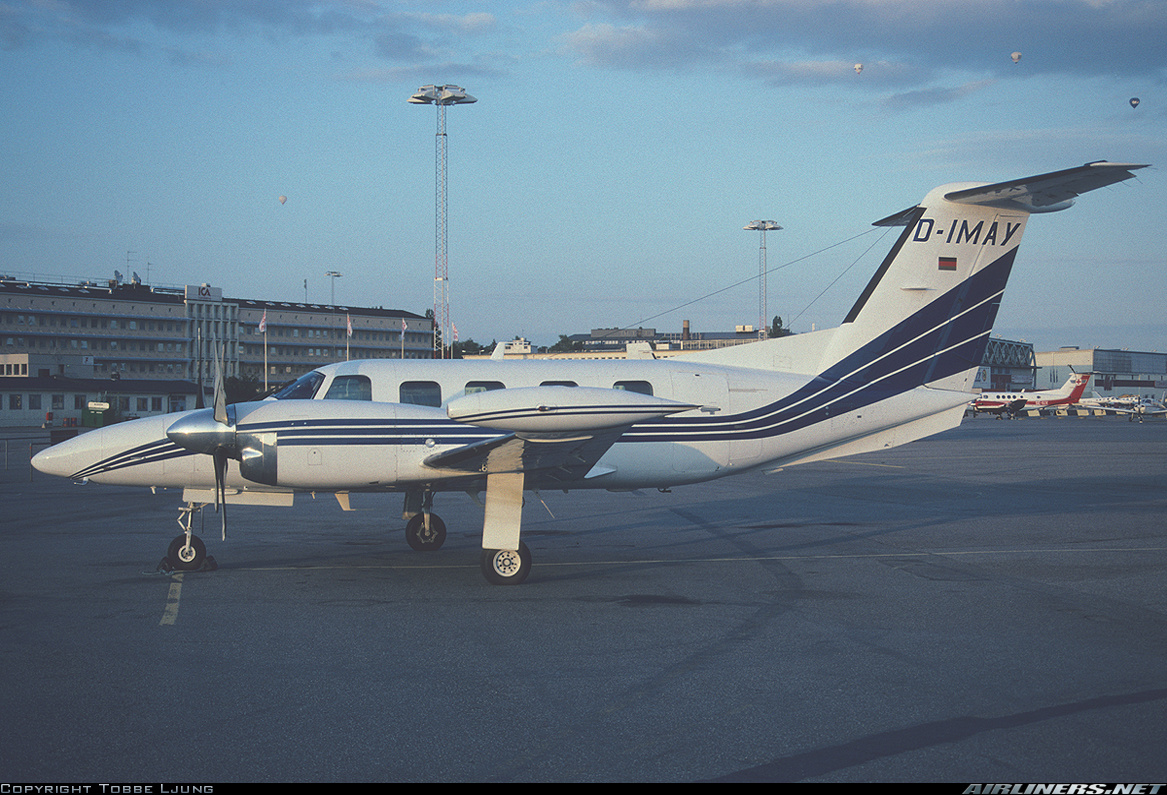

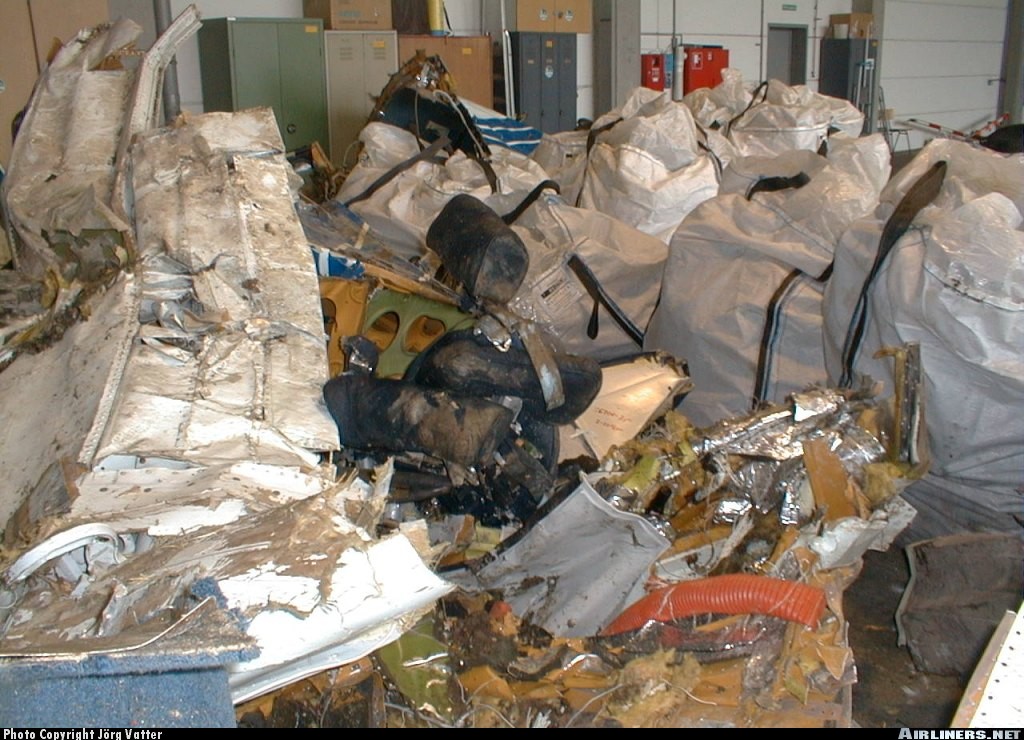
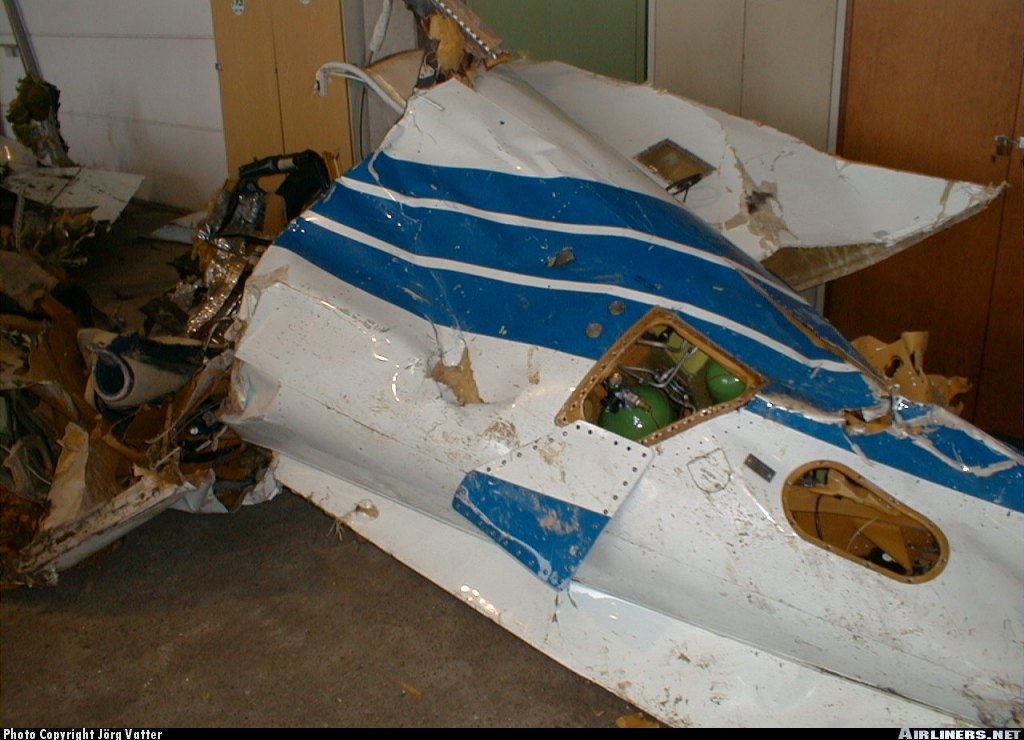

Crash of a Beechcraft RC-12K Huron near Nuremberg: 2 killed
Date & Time:
Mar 26, 2001 at 1555 LT
Registration:
85-0154
Survivors:
No
Schedule:
Wiesbaden - Nuremberg
MSN:
FE-8
YOM:
1987
Crew on board:
2
Crew fatalities:
Pax on board:
0
Pax fatalities:
Other fatalities:
Total fatalities:
2
Circumstances:
While approaching Nuremberg Airport following a reconnaissance mission from Wiesbaden, the twin engine aircraft crashed in unknown circumstances in the forest of Moritzberg, about 16 km short of runway 28. The aircraft was destroyed and both pilots were killed. They were belonging to the 205th MIB (Military Intelligence Brigade).
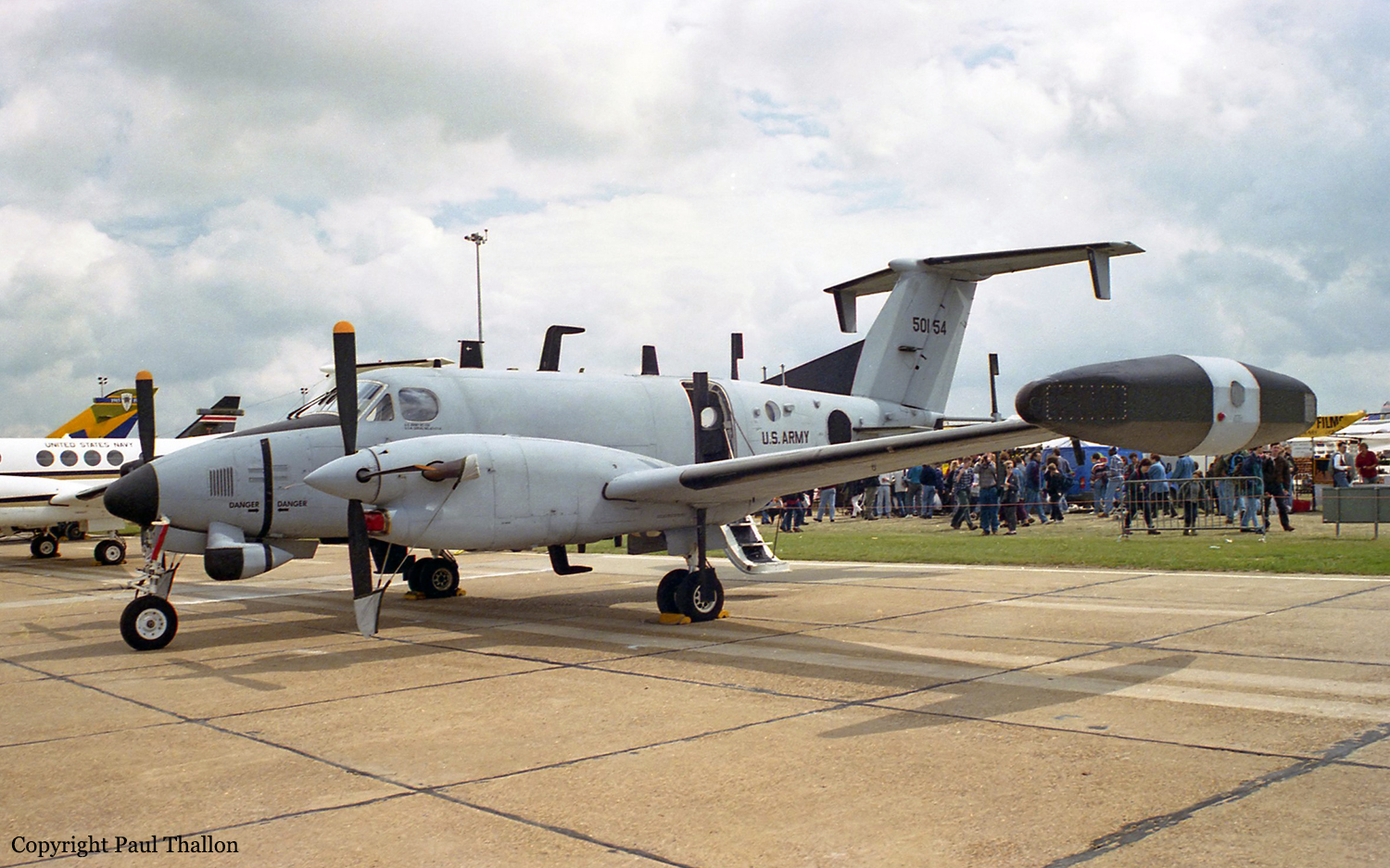
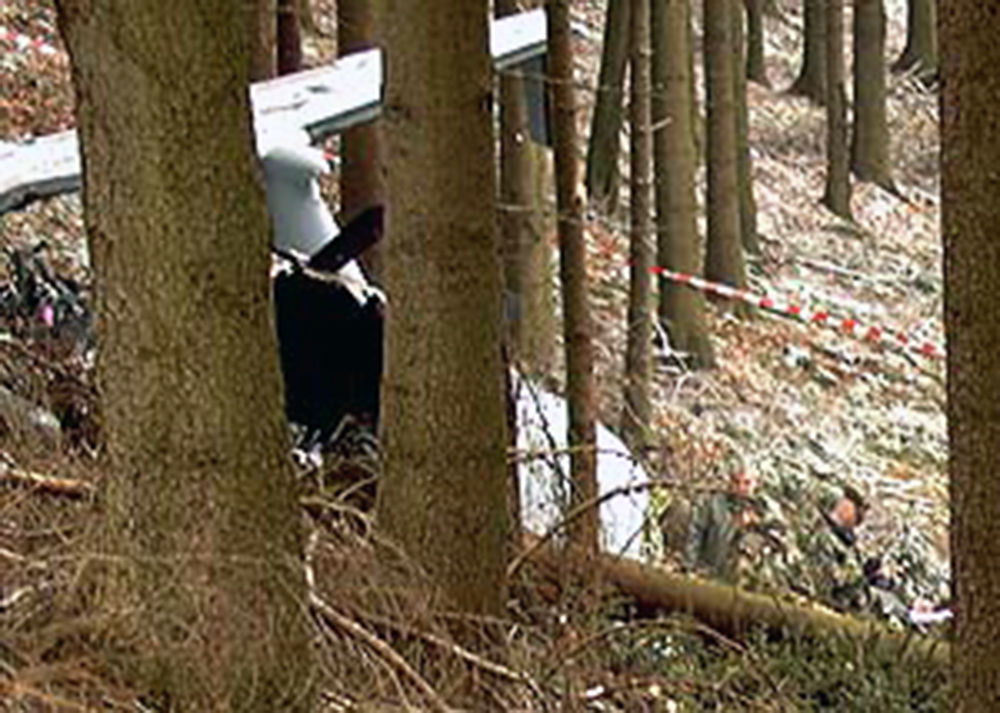
Crash of a Learjet 35A in Nuremberg: 3 killed
Date & Time:
Feb 8, 2001 at 1540 LT
Registration:
I-MOCO
Survivors:
No
Schedule:
Nuremberg - Rome
MSN:
35-445
YOM:
1981
Crew on board:
2
Crew fatalities:
Pax on board:
1
Pax fatalities:
Other fatalities:
Total fatalities:
3
Captain / Total hours on type:
54.00
Copilot / Total hours on type:
192
Circumstances:
During an inspection of the right engine a technician found chips in the oil filter. The damage should have been repaired within the next 20 flight hours. Since the maintenance organization in Switzerland, who usually carry out necessary repairs, did not have the spare parts available on time, the task was assigned to an organization in Nuernberg. On 07.02.2001, the airplane was ferried to Nuernberg and repaired in the presence of the chief technician of the operator. The repairs and the replacement of the parts exclusively on the right engine were certified properly. The return flight to Rome was planned for the 8th of February 2001 at about 1530 o’clock. A charter flight from Rome was to be carried out on the following day. Two pilots and the chief technician of the operator were aboard the aircraft. The flight preparation was carried out by phone from the repair facility. A weather briefing and the NOTAM´s for the flight were obtained properly. The check lists for the take-off were read. During the preparation the unbalanced fuel distribution between the right and left-hand tanks, and the fact that the total amount yet was equal on both sides was discussed. Immediately afterwards the second pilot noticed the failure of his gyro instruments. The airplane was taxied via the taxiways "Juliet" and "Foxtrot" to runway 10. Pilot at the controls was the pilot in command while the second pilot carried out the radio communications with the air traffic control. The pilots received the clearance for a departure via the departure route Noerdlingen (NDG 1 M) to Rome. The take-off was at 1531 o'clock. After 5 nautical miles the airplane turned to the south, following the departure route. At 15:33:49 o'clock the left-hand engine failed without a previous warning. The noise of a down running engine was also heard by several witnesses on the ground. Smoke or a fire was not seen by them. The second pilot reported an emergency with the left-hand engine shortly after the occurrence to the control tower and informed them that they wanted to return for a landing on the runway 10. At that time there were visual meteorological conditions, and the runway was continuously to be seen. Since the departure control Nuernber APP wished to coordinate the flight, the frequency was changed for a short time upon request. After the second pilot had declared the emergency once again they switched back to the tower again and continued the approach to runway 10. Up to the final approach the flight was without particular occurrences. The flaps were first set to 8° and later on to 20°, afterwards the landing gear was extended. At this time the airplane was somewhat north of the extended centerline slightly above the glide path for an instrument approach. Approximately one kilometer in front of the runway, when flying over the main road no. 4 near the small town of Buch, the airplane was observed by different witnesses as it made unusual flight maneuvers. The airplane deviated then from the landing direction to the north, and made some reeling movements. Afterwards it seemed for a short
period that the pilot intended to turn right to reach the runway. Immediately afterwards and near the ground the airplane abruptly stalled to the left approximately maintaining its height, then assuming a bank angle of more than 90°, and crashed nearly upside down at 1540 o’clock into a forest north of the runway. The airport fire service, who were in a standby position due to the announced safety landing of the Learjet reached the accident site approximately 4 minutes later and started to extinguish the fire. All three occupants had lost their lives during the impact. The airplane was destroyed.
period that the pilot intended to turn right to reach the runway. Immediately afterwards and near the ground the airplane abruptly stalled to the left approximately maintaining its height, then assuming a bank angle of more than 90°, and crashed nearly upside down at 1540 o’clock into a forest north of the runway. The airport fire service, who were in a standby position due to the announced safety landing of the Learjet reached the accident site approximately 4 minutes later and started to extinguish the fire. All three occupants had lost their lives during the impact. The airplane was destroyed.
Probable cause:
The accident was caused by an in-flight failure of the left power plant approximately 3 minutes after take-off and an inadequate conduct of the subsequent single-engine landing procedure so that in short final the airplane stalled and crashed from low height. The failure of the left engine was caused by intergranular fractures of retention posts on the high pressure turbine disk. As a result of incorrect service life recordings the maximum number of cycles had considerably been exceeded.
Final Report:
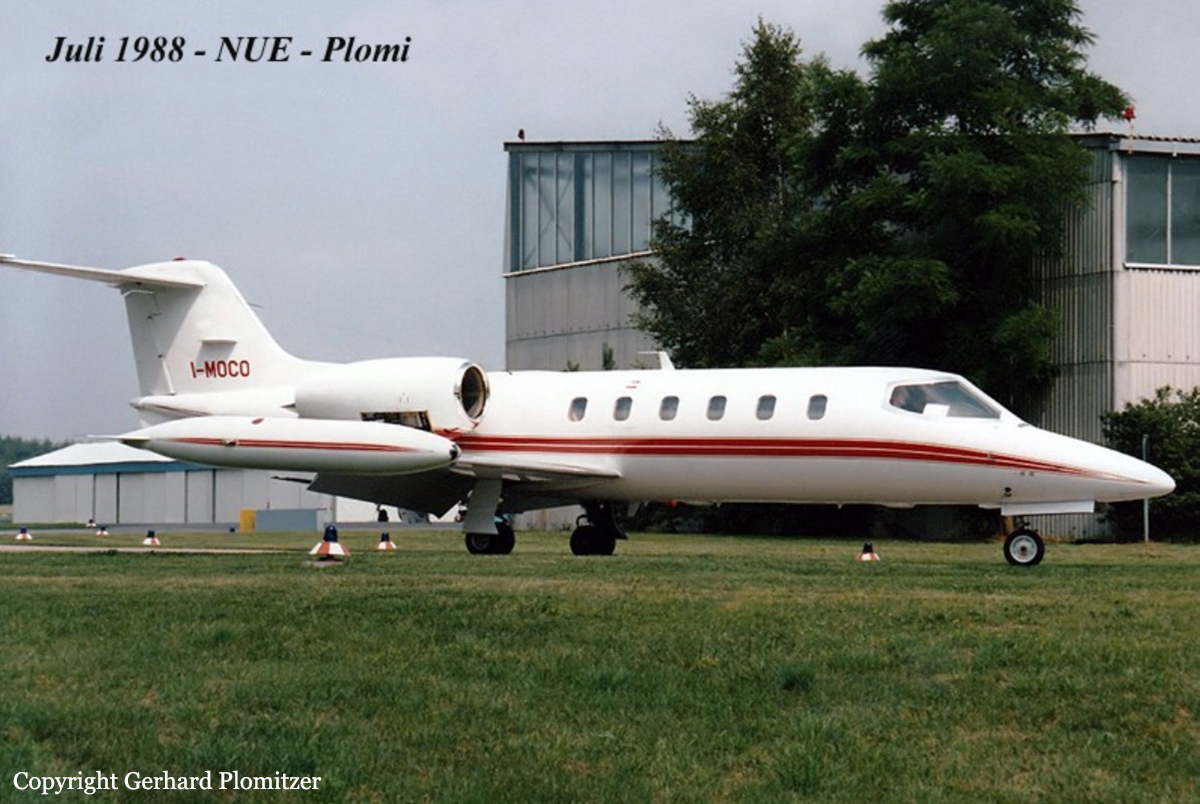
Crash of a Piper PA-60 Aerostar (Ted Smith 602P) in Coburg
Date & Time:
Oct 30, 2000 at 1456 LT
Registration:
D-IUAK
Survivors:
Yes
MSN:
62-0920-8165044
YOM:
1981
Crew on board:
1
Crew fatalities:
Pax on board:
0
Pax fatalities:
Other fatalities:
Total fatalities:
0
Circumstances:
After landing on runway 12/30 which is 632 metres long, the twin engine aircraft was unable to stop within the remaining distance. It overran, lost its left wing and came to rest, bursting into flames. The pilot, sole on board, was slightly injured.
Crash of a Beechcraft 300 Super King Air near Donaueschingen: 4 killed
Date & Time:
Oct 24, 2000 at 1716 LT
Registration:
D-CFMC
Survivors:
No
Schedule:
Donaueschingen - Donaueschingen
MSN:
FA-104
YOM:
1986
Crew on board:
2
Crew fatalities:
Pax on board:
2
Pax fatalities:
Other fatalities:
Total fatalities:
4
Circumstances:
The twin engine aircraft departed Donaueschingen-Villingen Airport in the afternoon on a local calibration mission. After several circuits over the area at an altitude of 7,000 feet, both NDB and DME systems have been calibrated and the crew was returning to the airport at the end of the afternoon. While approaching runway 36 in marginal weather conditions, the crew failed to realize his altitude was insufficient when the aircraft struck trees and crashed in a wooded area located about 15 km from the airport. The aircraft was destroyed and all four occupants were killed. According to published procedures, the crew was supposed to continue the approach at a minimum altitude of 4,500 feet until 11 km from the runway threshold then descending to 2,650 feet. For unknown reasons, the crew started the descent prematurely, causing the aircraft to impact terrain.
Probable cause:
Controlled flight into terrain after the crew descended too low under VFR mode in IMC conditions. The following contributing factors were identified:
- The crew canceled the IFR flight plan for an approach under VFR mode despite weather conditions were marginal and the visibility was insufficient,
- The crew failed to follow the approach checklist,
- The crew failed to complete an approach briefing,
- The crew did not proceed to any callouts on approach,
- The second pilot was procedurally not involved in cockpit work processes and decision-making,
- On approach, the crew referred to the Flight Management System (FMS type III series) which was initially dedicated to flight inspection purposes only,
- Measurement was performed by the flight engineer.
- The crew canceled the IFR flight plan for an approach under VFR mode despite weather conditions were marginal and the visibility was insufficient,
- The crew failed to follow the approach checklist,
- The crew failed to complete an approach briefing,
- The crew did not proceed to any callouts on approach,
- The second pilot was procedurally not involved in cockpit work processes and decision-making,
- On approach, the crew referred to the Flight Management System (FMS type III series) which was initially dedicated to flight inspection purposes only,
- Measurement was performed by the flight engineer.

Crash of a Cessna 303 TCrusader near Dossenheim: 1 killed
Date & Time:
Oct 20, 2000 at 0900 LT
Registration:
N9645C
Survivors:
No
Schedule:
Regensburg - Mannheim
MSN:
303-00197
YOM:
1982
Crew on board:
1
Crew fatalities:
Pax on board:
0
Pax fatalities:
Other fatalities:
Total fatalities:
1
Circumstances:
The twin engine aircraft departed Regensburg-Oberhub Airport in the morning on a flight to Mannheim City. About 15 minutes prior to arrival, the pilot cancelled his IFR flight plan and started the descent under VFR mode. On approach, at an altitude of 1,700 feet and at a speed of 110 knots, the aircraft struck tree tops and crashed in a wooded and hilly terrain located east of Dossenheim, about 15 km southeast of Mannheim Airport, bursting into flames. The aircraft was destroyed by impact forces and a post crash fire and the pilot, sole on board, was seriously injured. He died from his injuries two weeks later.
Probable cause:
The decision of the pilot to continue the approach under VFR mode in IMC conditions. The limited visibility caused by low clouds was considered as a contributing factor. At the time of the accident, the hilly terrain was shrouded in clouds. For unknown reasons, the approach speed was relatively low (110 knots).
Final Report:
Crash of a Cessna 340 in Griesheim: 3 killed
Date & Time:
Aug 9, 2000 at 1435 LT
Registration:
N4424X
Survivors:
No
Schedule:
Zweibrücken – Egelsbach
MSN:
340-0217
YOM:
1973
Crew on board:
1
Crew fatalities:
Pax on board:
2
Pax fatalities:
Other fatalities:
Total fatalities:
3
Captain / Total hours on type:
28.00
Aircraft flight hours:
4800
Circumstances:
The twin engine aircraft departed Zweibrücken Airport on a VFR flight to Egelsbach, carrying two passengers and one pilot. Following an uneventful flight at an altitude of 5,000 feet and while approaching the destination, the pilot informed ATC about technical problems and elected to divert to Griesheim-August-Euler Airport. On short final, while completing a left turn, the aircraft stalled and crashed 160 metres short of runway 25 threshold, bursting into flames. The aircraft was destroyed and all three occupants were killed.
Probable cause:
Failure of the left engine because the fuel selector valve was in OFF position. For unknown reasons, the pilot failed to feather the left propeller and on short final, the aircraft's speed was below minimum, causing the aircraft to stall and to crash. No technical anomalies were found on the aircraft.
Final Report:


